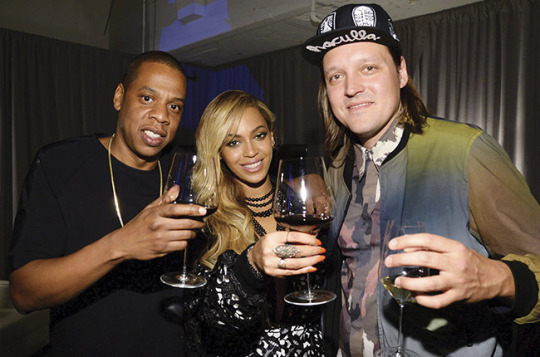
What Story is TIDAL, Jay-Z’s Streaming Service, telling?
A few weeks ago, Jay-Z stood alongside an A-list of pop stars and announced a “movement” to “change the course of history.”
Jay, with the First Lady of Hip Hop (his wife Beyoncé), and friends ranging from Alicia Keys to Jack White to Daft Punk, promised to “reestablish the value of music” with their new streaming service, TIDAL.
Even for a man who has encouraged people to, “dream big, be unrealistic,” this was a lofty goal.
The streaming space is crowded and full of well-established competitors like Spotify, Pandora, and Apple Radio. Although some artists complain of their royalty rates, these services have been widely adopted by consumers.
So where does TIDAL fit in?
TIDAL costs $19.99 per month and is owned by artists, instead of investors or technologists. Thus, thinking goes, musicians will receive higher royalty rates for their songs. And because of its partnerships with these artists, TIDAL also offers early access to new releases and exclusive content that is unavailable anywhere else. Finally, TIDAL offers CD-quality sound, better than the 320 KBPS streaming offered by Spotify.
These features all sound pretty good. So how has the service fared since Jay and Bey’s grand announcement?
In a word: poorly.
The app has plunged in popularity in the App store and it counts just 770,000 subscribers – compare this figure to Spotify’s 15 Million. Fans and critics alike, who accused it of being elitist and its owners greedy, also derided the service in the weeks following its launch.
Probably not what Jay-Z had in mind. And not what most people would expect from a service whose offerings are actually pretty compelling – on paper at least.
Where did it all go wrong?
We at Woden are big believers in the value of a story. After all, people don’t buy what you do – they buy why you do it. And for a dozen millionaires to stand on a stage in Manhattan, toast with champagne, and promise to reestablish the value of (their) music, well, it didn’t go so well.
To prospective consumers, TIDAL’s why sounds like: “So my friends and I can make more money.” Not the sort of pitch that will inspire someone to cancel their Spotify subscription and pay twice as much for a service with a fraction of the catalog.
In all fairness, it is early in the game, and TIDAL may well become a viable service. But it will have a steep hill to climb to make people forget about its tone-deaf launch.
One suggestion: look inward and clarify what music’s value is, before endeavoring to reestablish it.
We suspect that, for most fans, the value of music isn’t what the artist who made it gets paid for it or how. Its true worth is probably beyond definition, and boils down to music’s ineffable ability to captivate and inspire listeners.
With its exclusive content and superior sound fidelity, TIDAL may actually be able to capture that sparkle better than its competitors. Our advice would be to downplay the talk of royalty rates and artist ownership, and simply position TIDAL as the superior streaming service (in terms of sound quality and UI) for true fans (because of its exclusive content), that’s worth its premium price tag.
To use the example of another tech company, Apple has been able to mint money selling premium products – it sold more iWatches in one day than Android Wear sold in 2014 – by highlighting on their technical advantages and cool factor, instead of their wide profit margins.
This narrative shifts the focus of TIDAL’s story to the fan, instead of the artist (the buyer, instead of the seller), and makes them feel a part of something beyond simply lining Jay-Z’s (already fat) pockets.
The question is: at this stage, can they convince consumers that’s why they’re doing it?
If your business needs help fleshing out the services and features that are most valuable to your customers, give Woden a call. We help businesses of all sizes convey their whys to boost sales and drive engagement with their brands.
We don’t aspire to “change the course of history,” but we will help your business focus on the principles that matter most to your audience.


